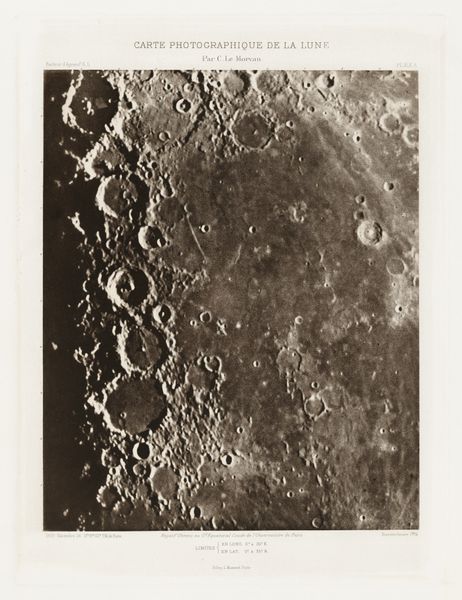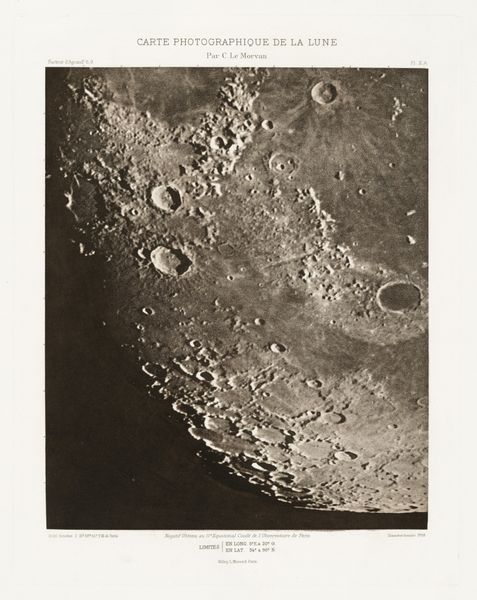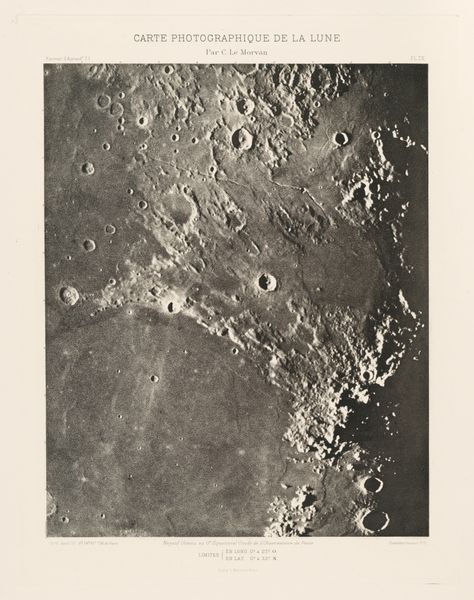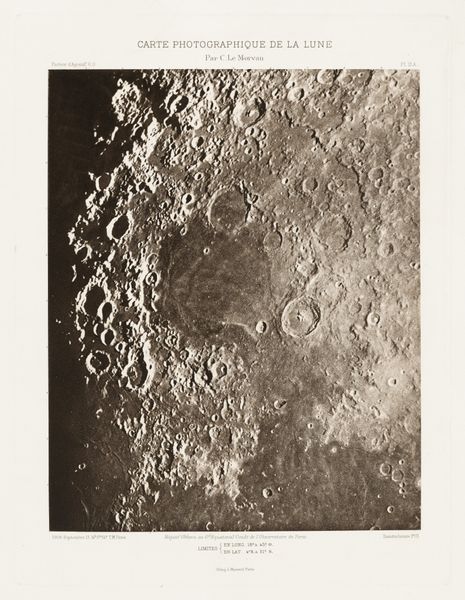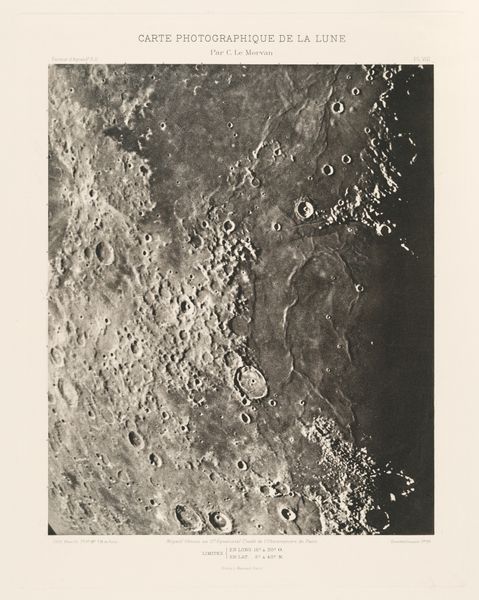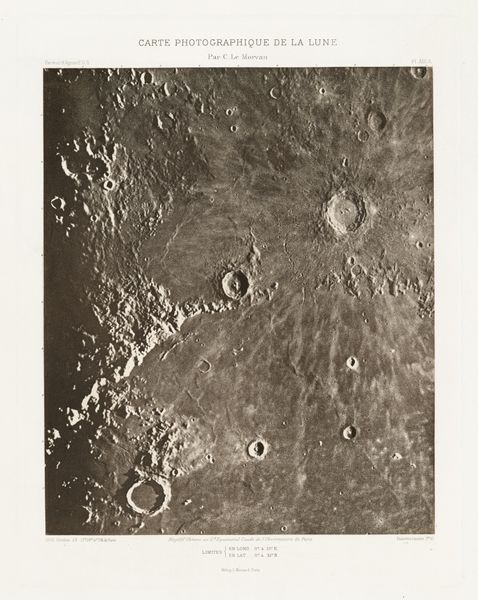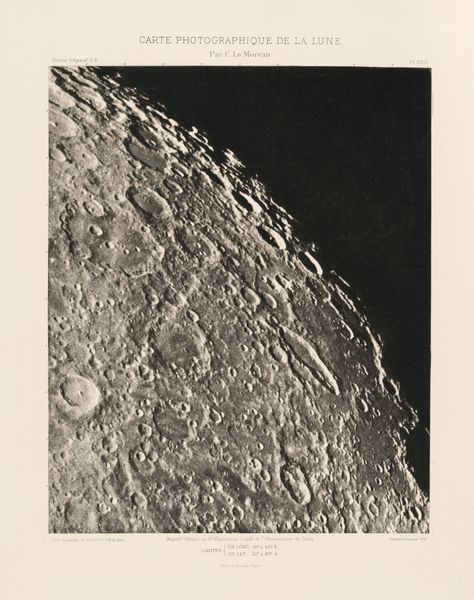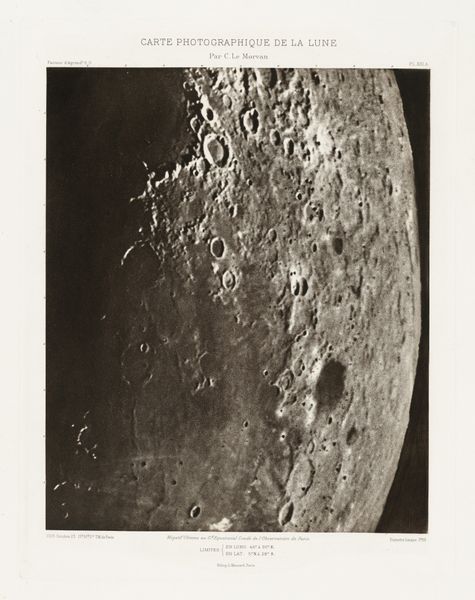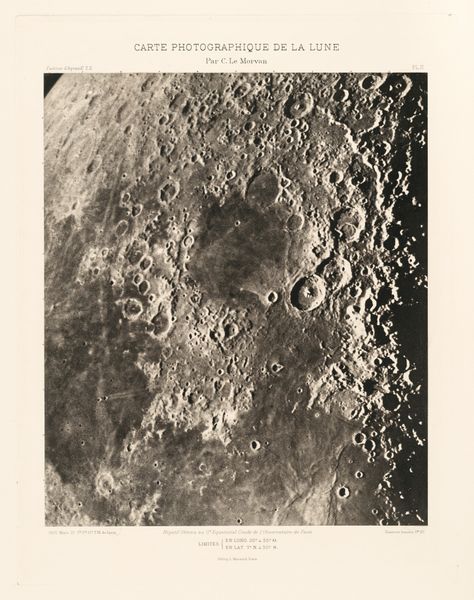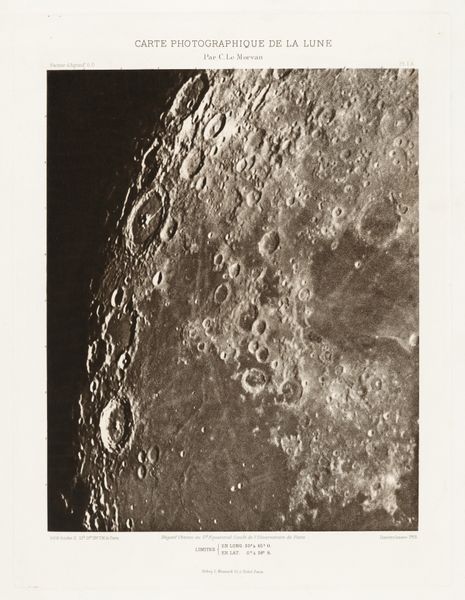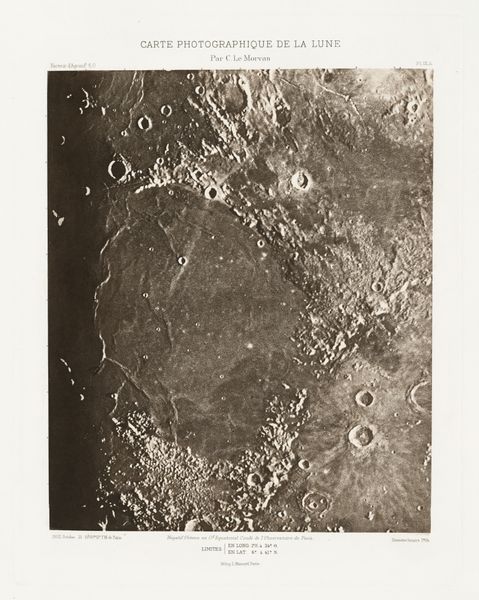
Carte photographique de la lune, planche VIII.A (Photographic Chart of the Moon, plate VIII.A) Possibly 1908 - 1914
0:00
0:00
#
white colour balance
#
photo of handprinted image
#
pale colours
#
natural tone
# print
#
organic shape
#
light coloured
#
repetition of white
#
white palette
#
repetition of white colour
#
remaining negative space
Dimensions: image: 31.1 × 25.5 cm (12 1/4 × 10 1/16 in.) plate: 40 × 29.5 cm (15 3/4 × 11 5/8 in.) sheet: 48.9 × 37.9 cm (19 1/4 × 14 15/16 in.)
Copyright: National Gallery of Art: CC0 1.0
Editor: This is Charles Le Morvan’s “Carte photographique de la lune, planche VIII.A”, a print made sometime between 1908 and 1914. The stark monochrome creates this really powerful sense of otherworldliness. How should we be interpreting it today? Curator: Well, considering this work through a critical lens, it becomes more than just a scientific document. Think about the historical context: early 20th century, a period of intense scientific advancement intertwined with colonial expansion. This map represents a specific way of seeing and knowing. Editor: In what way? Curator: The act of mapping itself can be seen as an act of claiming, of exerting control over a territory, even if that territory is celestial. This image visualizes scientific ambition; to capture and classify, inherently shaping our understanding. Do you see parallels with how geographical territories were being approached at the time? Editor: That’s a good point. It’s easy to forget the power dynamics involved when you look at something like this just for its scientific value. Were there other artistic movements going on that would play into how Le Morvan was perceiving and printing the Moon? Curator: Absolutely. The pictorialist movement, with its emphasis on photography as art, valued aesthetic beauty and personal expression over pure representation. The artistic quality of this photographic chart shouldn't be dismissed; there is artistry even within scientific practice, inflected with his worldview, even subconscious colonialist assumptions. What are your thoughts about the negative space on the page? Does the scientific precision create an equal artistic value? Editor: I never thought of it like that. Looking at the unprinted areas gives me another level of awareness, how “science” is not objective; who decides the scale, framing and focus? The boundaries of inclusion are critical choices. Thank you! Curator: Exactly! And thinking about it in this context gives us a fuller picture.
Comments
No comments
Be the first to comment and join the conversation on the ultimate creative platform.
